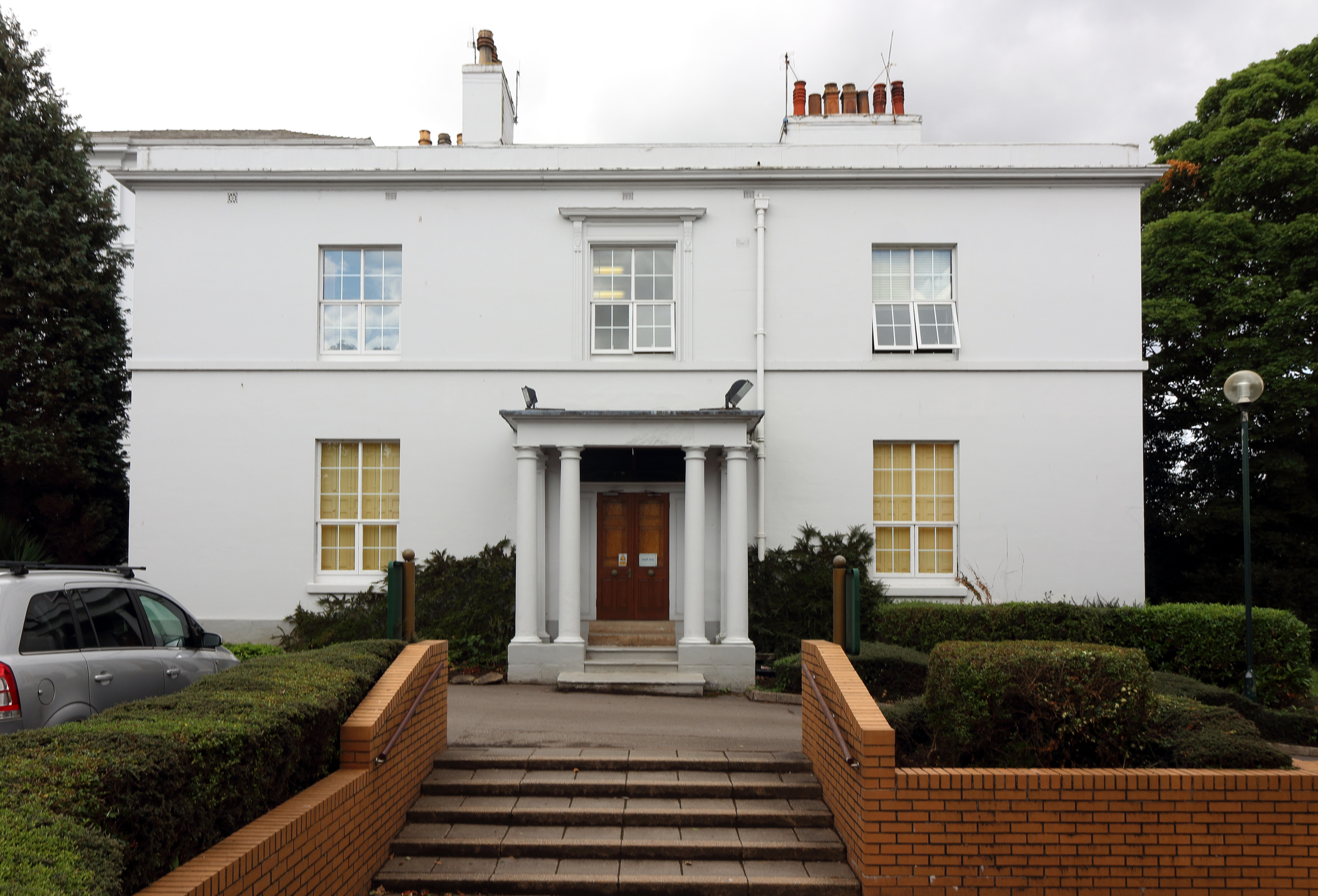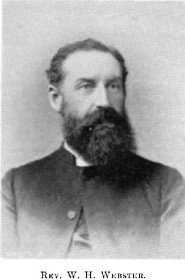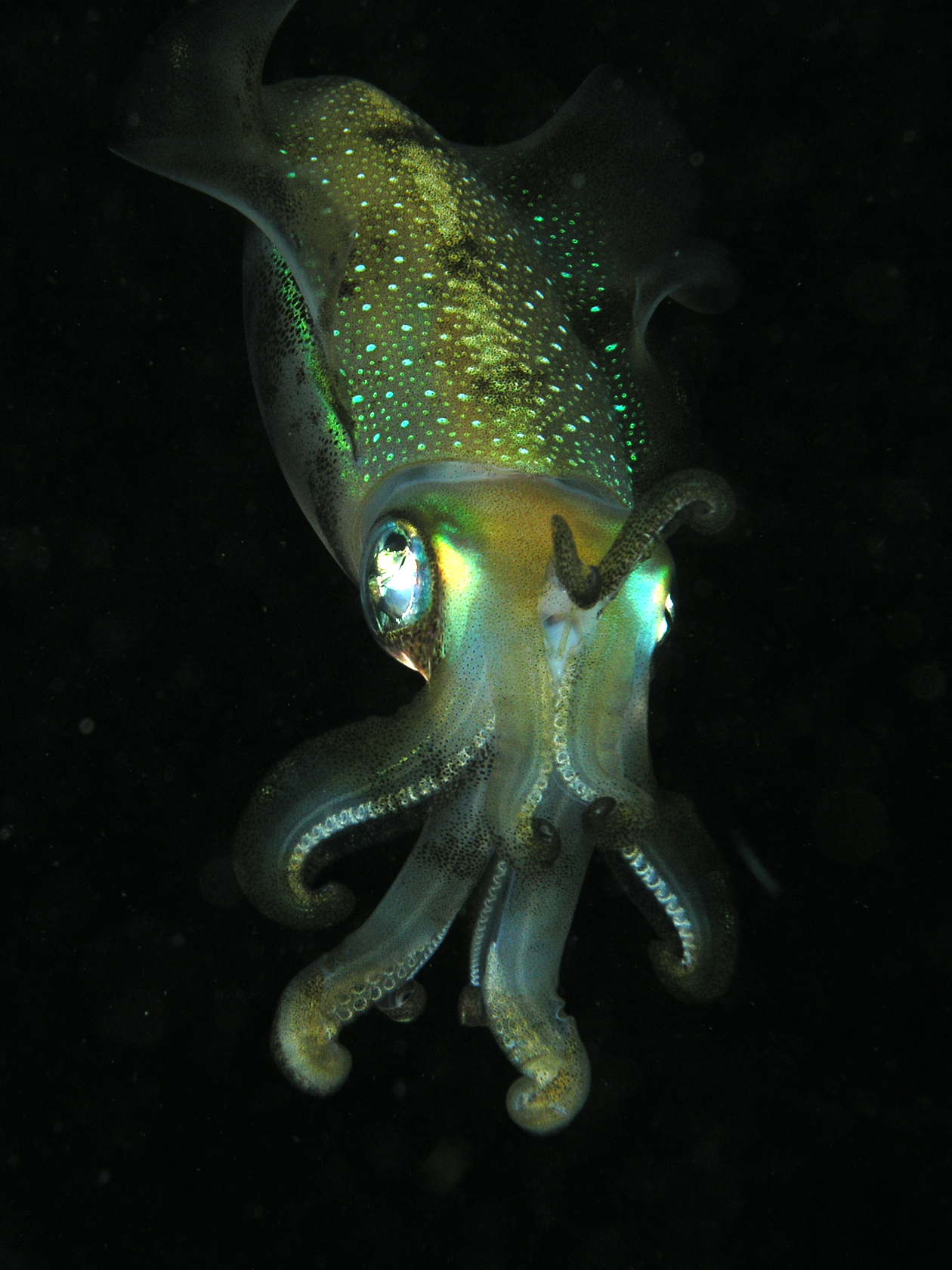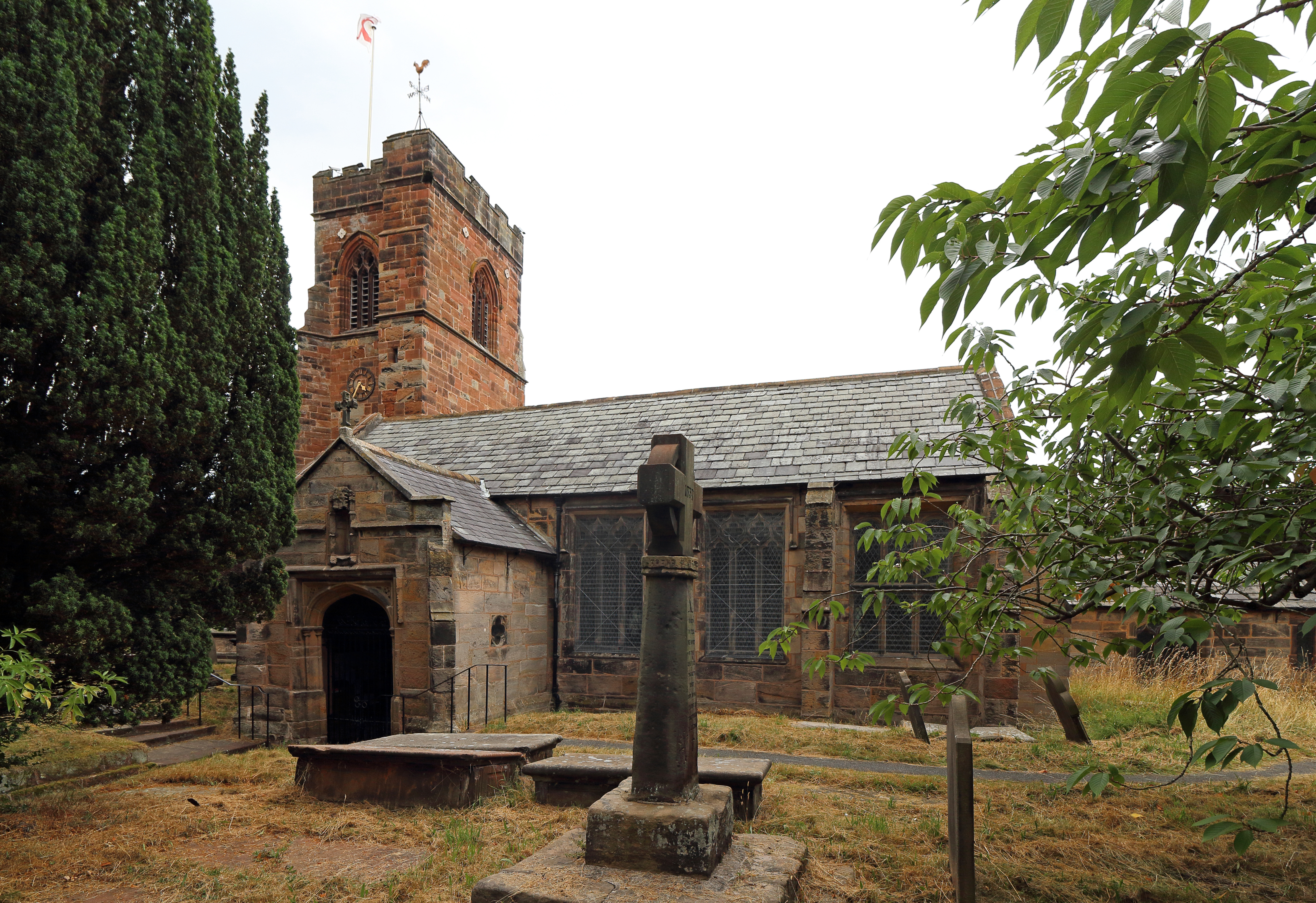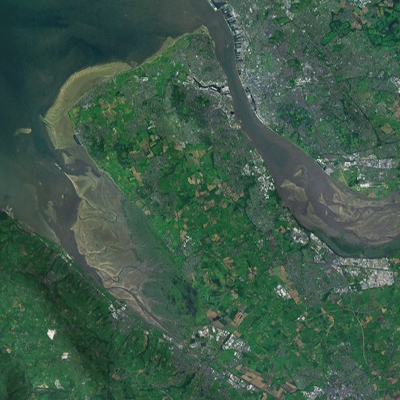|
Upton Hall, Merseyside
Upton Hall is a large manor house on the peninsula known as the Wirral Peninsula, Wirral, in the village of Upton, Merseyside, Upton in Merseyside, England (historically, the hall was in the county of Cheshire). The owner of the hall was styled the Lord of the Manor and also known as the Squire. The Manor of Upton itself dates back to the Domesday Book in 1086, when it was recorded as being held by William Mallbank. "The title of Lord of the Manor of Upton passed from Mallbank to the Praers and Ornebias, one of whom in 1230 gave it, and the Manor of Willaston, to his mother. It descended through female heirs to Sir John Arderne and was given as a wedding present when his daughter married Baldwin Bold in 1310." Ownership of the hall and associated titles and privileges changed frequently. After six generations of occupation by the Bolds, it was purchased by Robert Davies in 1614. The currently standing Upton Hall, built by the Webster family in the 1800s, is a Grade II listed bu ... [...More Info...] [...Related Items...] OR: [Wikipedia] [Google] [Baidu] |
Upton Hall
Upton Hall is the headquarters of the British Horological Institute (BHI) in Upton, Newark and Sherwood, Nottinghamshire, England. It has been the headquarters since 1972. It also houses the Museum of Timekeeping consisting of a substantial collection of clocks, watches and also a library. The Museum is open to the public during seasonal summer opening hours, for special events and for pre-booked Group tours. History The Hall was built in 1828 by Thomas Wright (1773-1845) a banker of Nottinghamshire. It was designed by the architect W J Donthome. The hall was purchased in 1895 by John Warwick, a brewer of the firm 'Warwick & Richardson' based in Newark. He used it as a family home. He added a Ballroom, a Billiards Room, and a further six bedrooms. In 1936 the property was bought by Sir Albert Ball, though he never took up residence there. In 1952 the hall was declared a listed building. It is now a grade II* listed building, making it one of the most treasured 5% of all buildi ... [...More Info...] [...Related Items...] OR: [Wikipedia] [Google] [Baidu] |
Court For Divorce And Matrimonial Causes
In the history of the courts of England and Wales, the Court for Divorce and Matrimonial Causes was created by the Matrimonial Causes Act 1857, which transferred the jurisdiction of the ecclesiastical courts in matters matrimonial to the new court so created. The Judge Ordinary of the Court for Divorce and Matrimonial Causes also presided over the Court of Probate, but the two courts remained separate entities. On 1 November 1875, under the Supreme Court of Judicature Act 1873 and the Supreme Court of Judicature Act 1875, the Judge Ordinary of the Court for Divorce and Matrimonial Causes was transferred, as its President, to the Probate, Divorce and Admiralty Division of the High Court of Justice. Judges ordinary of the Court for Divorce and Matrimonial Causes * 6 January 1858: Sir Cresswell Cresswell * 26 August 1863: Sir James Plaisted Wilde (ennobled as Lord Penzance from 6 April 1869) * 14 November 1872: Sir James Hannen James Hannen, Baron Hannen, PC, FRS (19 Marc ... [...More Info...] [...Related Items...] OR: [Wikipedia] [Google] [Baidu] |
Upton Hall School FCJ
Upton Hall School FCJ is a catholic girls' grammar school with academy status located in Merseyside, England. It was founded in 1849 by the Faithful Companions of Jesus (FCJ). Admissions It is one of four Catholic schools in the Metropolitan Borough of Wirral. The school is located within the Catholic Diocese of Shrewsbury. It was awarded 'Outstanding' by Ofsted in 2006, 2012 and again in 2022. The school holds Training School status. History It was founded as a girls' convent school by Nuns of the Society of the Faithful Companions of Jesus (FCJ) in 1862. The remains of Marie Madeleine, the founder of the FCJ, were reburied in the school's personal graveyard in 1904 due to anti-clerical tensions in France. Her body was moved to Kent in 1980, and subsequently to Paris in 2012. Alumni * Berlie Doherty, children's books author, and playwright, twice winner of the Carnegie Medal * Charlotte O'Conor Eccles, Irish writer * Sally Nugent, sports reporter on BBC Bre ... [...More Info...] [...Related Items...] OR: [Wikipedia] [Google] [Baidu] |
Faithful Companions Of Jesus
The Faithful Companions of Jesus Sisters (FCJ Sisters, French: ''Fidèles compagnes de Jésus'') is a Christian religious institute of the Roman Catholic Church directly subject to the Pope. It was founded in Amiens in France in 1820 by Marie Madeleine de Bonnault d'Houët. Service The FCJ sisters can be found in the Americas, Asia, Australia and Europe. In Australia The FCJ sisters first arrived in Australia in 1882 and soon founded a school in Richmond, an inner suburb in Melbourne. Vaucluse College FCJ was soon at capacity, so land was purchased in Kew. They built a new convent and boarding school which marked the establishment of Genazzano FCJ College. In 1900 the Sisters set up a school in Benalla called FCJ College and in 1968 founded Stella Maris Convent and boarding school in Frankston, Victoria. The Stella Maris Convent and Vaucluse College FCJ have since closed. Today, FCJ communities exist around the country. In 2002 the Sisters joined with those in Indonesia and ... [...More Info...] [...Related Items...] OR: [Wikipedia] [Google] [Baidu] |
William Inman
William Inman (6 April 1825 in Leicester – 3 July 1881 in Upton, Wirral) was the owner of the Liverpool, New York and Philadelphia Steamship Company. Also known as the Inman Line, it ran services from Liverpool to New York New York most commonly refers to: * New York City, the most populous city in the United States, located in the state of New York * New York (state), a state in the northeastern United States New York may also refer to: Film and television * '' ... and Philadelphia, in the United States, for emigration in the mid-19th century. He was the fourth son of Charles Inman. He became the owner of Upton Manor, in the grounds of Upton Park and held the title Lord of the Manor of Upton. A benefactor to his local community, Inman donated funds for the construction of Christchurch, Moreton and St. Mary's Church, Upton. Inman married in 1849 Anne Brewis Stobart, daughter of William Stobart of Picktree. He died at Upton Manor in 1881 and was buried at Moreton ... [...More Info...] [...Related Items...] OR: [Wikipedia] [Google] [Baidu] |
William Henry Webster
The Reverend William Henry Webster (1 October 1850 – 1931) was born at Upton Hall, Cheshire. After a brief career in the navy, during which he saw service in Asia, Webster studied to become a priest and followed this vocation to his retirement. Rev. Webster married Mary Stubbs, the niece of the late Dr. Stubbs, Bishop of Oxford, in August 1875. They had a family of five children. Webster died in 1931, at Barton-on-Sea, Hampshire, England. While posted in New Zealand he became interested in sea-shells and established a reputation as a Malacologist (the study of molluscs) and conchologist (the study of sea-shells). Several New Zealand molluscs are named after him and a collection of his shells can be found in the Auckland War Memorial Museum. The Websters of Upton In 1798, John Webster, a farmer, bought the Upton manor house, Upton Hall, and title "Lord of the Manor". He was subsequently known Squire. His son William was a philanthropist and was widely popular. William's father m ... [...More Info...] [...Related Items...] OR: [Wikipedia] [Google] [Baidu] |
Malacologist
Malacology is the branch of invertebrate zoology that deals with the study of the Mollusca (mollusks or molluscs), the second-largest phylum of animals in terms of described species after the arthropods. Mollusks include snails and slugs, clams, and cephalopods, along with numerous other kinds, many of which have shells. One division of malacology, conchology, is devoted to the study of mollusk shells. Malacology derives . Fields within malacological research include taxonomy, ecology Ecology () is the study of the relationships between living organisms, including humans, and their physical environment. Ecology considers organisms at the individual, population, community, ecosystem, and biosphere level. Ecology overlaps wi ... and evolution. Applied malacology studies medical, veterinary, and agricultural applications; for example, mollusks as vectors of disease, as in schistosomiasis. Archaeology employs malacology to understand the evolution of the climate, the biota ... [...More Info...] [...Related Items...] OR: [Wikipedia] [Google] [Baidu] |
Norwich
Norwich () is a cathedral city and district of Norfolk, England, of which it is the county town. Norwich is by the River Wensum, about north-east of London, north of Ipswich and east of Peterborough. As the seat of the See of Norwich, with one of the country's largest medieval cathedrals, it is the largest settlement and has the largest urban area in East Anglia. The population of the Norwich City Council local authority area was estimated to be 144,000 in 2021, which was an increase from 143,135 in 2019. The wider built-up area had a population of 213,166 in 2019. Heritage and status Norwich claims to be the most complete medieval city in the United Kingdom. It includes cobbled streets such as Elm Hill, Timber Hill and Tombland; ancient buildings such as St Andrew's Hall; half-timbered houses such as Dragon Hall, The Guildhall and Strangers' Hall; the Art Nouveau of the 1899 Royal Arcade; many medieval lanes; and the winding River Wensum that flows through the city ... [...More Info...] [...Related Items...] OR: [Wikipedia] [Google] [Baidu] |
Poor House
A poorhouse or workhouse is a government-run (usually by a county or municipality) facility to support and provide housing for the dependent or needy. Workhouses In England, Wales and Ireland (but not in Scotland), ‘workhouse’ has been the more common term. Before the introduction of the Poor Laws, each parish would maintain its own workhouse; often these would be simple farms with the occupants dividing their time between working the farm and being employed on maintaining local roads and other parish works. An example of one such is Strand House in East Sussex. In the early Victorian era (see Poor Law), poverty was seen as a dishonourable state. As depicted by Charles Dickens, a workhouse could resemble a reformatory, often housing whole families, or a penal labour regime giving manual work to the indigent and subjecting them to physical punishment. At many workhouses, men and women were split up with no communication between them. Furthermore, these workhouse systems we ... [...More Info...] [...Related Items...] OR: [Wikipedia] [Google] [Baidu] |
Woodchurch, Merseyside
Woodchurch is an area of Birkenhead on the Wirral Peninsula, in England. Administratively, Woodchurch is within the Metropolitan Borough of Wirral, its parliamentary constituency is Wirral West, and its local council ward is Upton. At the 2001 Census, it had a population of 8,400 (3,840 males, 4,560 females). Woodchurch is dominated by a large housing development, known as the Woodchurch Estate. The district is served by several schools and has the major Arrowe Park Hospital just outside its boundary, which was built on of the park itself and opened in 1982. History Woodchurch was originally a farming area and ancient village of the Wirral Hundred, known mainly for its parish church and the neighbouring Arrowe Park country estate. The first recorded owner of the land was an Anglo-Saxon chief called Aescwulf who claimed ownership of Woodchurch, Arrowe and Landican. Although not recorded in the Domesday Book, Woodchurch was recorded as ''Wude Church'' in 1093. The population ... [...More Info...] [...Related Items...] OR: [Wikipedia] [Google] [Baidu] |
Wirral Peninsula
Wirral (; ), known locally as The Wirral, is a peninsula in North West England. The roughly rectangular peninsula is about long and wide and is bounded by the River Dee to the west (forming the boundary with Wales), the River Mersey to the east, and the Irish Sea to the north. Historically, the Wirral was wholly in Cheshire; in the Domesday Book, its border with the rest of the county was placed at "two arrow falls from Chester city walls". However, since the Local Government Act 1972, only the southern third has been in Cheshire, with almost all the rest lying in the Metropolitan Borough of Wirral, Merseyside. An area of saltmarsh to the south-west of the peninsula lies in the Welsh county of Flintshire. The most extensive urban development is on the eastern side of the peninsula. The Wirral contains both affluent and deprived areas, with affluent areas largely in the west, south and north of the peninsula, and deprived areas concentrated in the east, especially Bir ... [...More Info...] [...Related Items...] OR: [Wikipedia] [Google] [Baidu] |
Poulton-cum-Seacombe
Poulton is an area of the town of Wallasey, in the Metropolitan Borough of Wirral, Merseyside, England. It is located on the Wirral Peninsula and bordered by Liscard to the north, Egremont to the north east and Seacombe to the east. The West Float (part of the former Wallasey Pool which gave the area its name), is to the south. History The name is Old English in origin and derives from ''pōl'', meaning "pool" and ''tún'', "a farm or settlement". Originally a small fishing and farming hamlet, Poulton developed in the 19th century through the expansion of the docks and associated industries, becoming part of Poulton cum Seacombe before the two areas split. The settlement was part of the Wallasey parish of the Wirral Hundred, becoming a civil parish in 1866 and then part of the County Borough of Wallasey in 1912. The population of Poulton-cum-Seacombe was 178 in 1801, 3,044 in 1851, and 20,749 in 1901. The area was served from 1895 by Liscard and Poulton railway station o ... [...More Info...] [...Related Items...] OR: [Wikipedia] [Google] [Baidu] |
